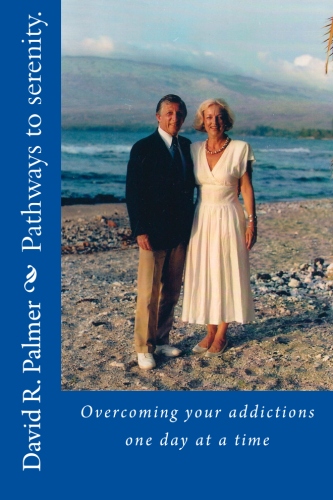By David Palmer
 Cocaine addicts are a special breed. That’s what Norith Ellison says. And he should know. Ellison, 60, is a recovering cocaine addict who has been clean and sober for 21 years and started the state’s first Cocaine Anonymous (CA) meeting in Little Rock in 1989.
Cocaine addicts are a special breed. That’s what Norith Ellison says. And he should know. Ellison, 60, is a recovering cocaine addict who has been clean and sober for 21 years and started the state’s first Cocaine Anonymous (CA) meeting in Little Rock in 1989.
Widely known and respected in the community for his far ranging activities in the service of addiction recovery and an unsuccessful candidate for state representative in 2006 who will likely run again, Ellison is modest about his role in starting a CA meeting.
A resentment and a coffee pot
When asked about it, he laughs and says, “No big deal. All you need to start a 12-Step meeting is a resentment and a coffee pot..”
Ellison adds, “Seriously, I was just the guy God decided to work through to start Cocaine Anonymous groups in Arkansas. My biggest challenge in the beginning was finding the space. Nobody would rent me a room for my meeting.”
No one, that is, until Reverend William Robinson, Jr., pastor of Theresa Hoover United Methodist Church and founder of the Hoover treatment facility on 12th street, heard of Ellison’s need.
Robinson said, “I’ll give you your room.”
Today there are 30 CA meetings a week in Little Rock.
When it comes to substance abuse, Ellison knows what he is talking about. He’s been there.
He was brought up in the Ives Walk project in southeast Little Rock, one of thirteen children. His father was a meat packer and his mother a “domestic.” The kids, he says, were well fed “with a heavy emphasis on meat,” he recalls with a smile, and while the quarters were a little limiting — each child was only allowed to bring home one guest at a time — the arrangement, despite some infractions, he recalls, worked pretty well.
Vietnam experience
At 15, Ellison began to dabble in drugs. He started faking it with Lipton tea rolled in cigarettes to impress his buddies but soon graduated to the real thing — pot, codeine and LSD. At 18 he enlisted in the army and after basic training in El Paso, he was shipped out to Vietnam where he served as a medical corpsman. He was in the same division as Lt. William L. Calley, who, many will remember, was convicted of war crimes in the slaughter of civilians at My Lai.
Heroin was readily available in Vietnam, much of it bought from Vietnamese farmers, and Ellison used the drug daily. He functioned well enough to do his job which included dealing with the most ghastly effects of combat, and with 13 months of service in Vietnam, he was mustered out in 1970 as an E-5 (“Sergeant” to older veterans).
For the next nine years, Ellison, overcome by his addiction, roamed the mean streets of New York’s Harlem, Newark, N.J. and Waterbury, Connecticut. He was a daily drug user and most of the time he was homeless and eating from some of the worst dumpsters on the planet.
When his father died in 1976, family members tracked Ellison down and sent him a plane ticket to Little Rock (refusing his request for money to buy the ticket) for the funeral. He came back but returned to the east coast until 1979 when he returned to Little Rock for good. That was also the year he switched from heroin to cocaine.
Cocaine, Ellison says, is a drug of unbelievably destructive power.
“It really takes you down. I have seen a guy,” he says, “go from a Lexus to a draw string garbage bag in a week.”
Ellison, while still in the throes of his addiction, married in 1983 and in the following years, the couple had three children.
In 1987, which Ellison describes as “the lost year” things began to really unravel, and on Christmas Eve of 1988 he put a pistol in his mouth and pulled the trigger. The gun misfired.
“After that,” Ellison says, “the drugs stopped working, and I couldn’t get high. One night about midnight I called the 1-800-Cocaine hotline, and they directed me to Larry Stone at the Restore program,” a 30 day 12-Step treatment program in Little Rock.
Right away, Ellison says, he had a problem with the first step, part of which is to admit we are powerless.
“The nurse at Restore kept reminding me of my ‘powerlessness,’ and we argued at length about the need to admit powerlessness which I strongly resisted even to the point of getting mad. She became afraid, and I felt powerful.
”But that’s when I got it. The irony of it was that she went home to her family and probably had a comfortable rest in her own bed. I in turn was going back to a cot in a lockup. For the first time I accepted my powerlessness.”
The next hurdle was the fellowship aspect. Ellison was going to AA meetings, and he loved the 12-Steps, but he was having trouble connecting with the other people attending except for one person. That was Columbus A. who became his sponsor 21 years ago and is still his sponsor.
Ellison concluded that the experiences of his cocaine addiction were different than the alcoholic’s experience, and he needed more time with his kind of addict.
Cocaine Anonymous begins in Arkansas
Shortly after that, Dr. Robinson gave him the key to the meeting room at Hoover, and six men gathered for the first meeting of the Rainbow group of Cocaine Anonymous.
 Ellison didn’t know whether the meetings would catch on but he got powerful help from the late Joe McQuany and “Geno” Walters, both recovering alcoholics. He couldn’t have found better mentors.
Ellison didn’t know whether the meetings would catch on but he got powerful help from the late Joe McQuany and “Geno” Walters, both recovering alcoholics. He couldn’t have found better mentors.
McQuany, who died in 2007, was an internationally known lecturer on alcoholism and the 12-Steps, author of Recovery Dynamics and two other books, founder of Serenity Park treatment facility, co-founder of the Wolfe Street Center and the man who helped integrate AA meetings in Arkansas in the early 1960’s.
Walters, also deceased, was best known for founding the Sunday morning Hour of Power meetings at Wolfe Street which drew huge crowds and transformed lives. He was a leader in the recovery community and quietly helped Ellison get his CA meetings off the ground.
Geno’s basic text was the eleventh step which states, “Sought through prayer and meditation to improve our conscious contact with God as we understood Him, praying only for knowledge of His will for us and the power to carry that out.”
As Ellison’s CA meetings began to catch on in Little Rock and eventually spread to Pine Bluff, he turned to other ways to help people recover from their addictions.
One of the things that especially troubled him was the large number of people in recovery who have a relapse (often called a “slip”) and turn to alcohol and other drugs once again for a solution to life’s problems.
“In my first year of sobriety,’ Ellison says, “I sponsored three guys, and they all got loaded. That’s when I got interested in ‘relapse prevention’ a program for living to supplement, certainly not replace, the 12-Step program.”
Using as his text, “Staying Sober, a guide for relapse prevention” by Terence T. Gorski and Merlene Miller, which comes with a workbook, Ellison began to conduct classes at his New Reality Center just off Asher Avenue on Appianway St. also rents rooms for 12-Step and other meetings.
Speaking about the book in its preface, the late Father Joseph C. Martin, a renowned supporter of AA and other 12-Step programs, had this to say, “Relapse Prevention planning is a powerful new approach that is helping thousands to escape from what had previously been a death sentence.”
To sustain these recovery-focused activities and support his family, Ellison has continued to work as a journeyman lineman for the City of North Little Rock Electric Company for 22 years and has his own company, HuCOM training solutions. HuCOM which designs training programs for companies and also offers motivational speeches given by Ellison. One of his clients is the NY/NJ Port Authority.



